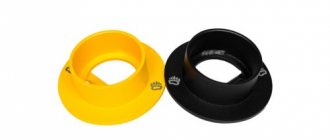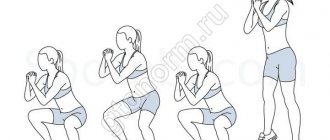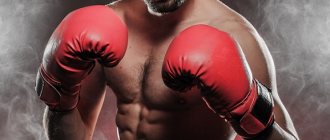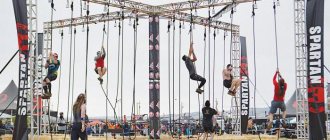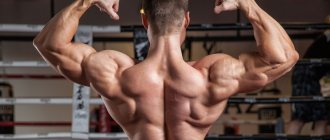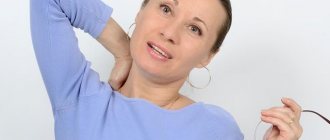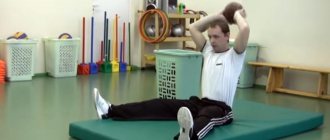Agility is an extremely important skill not only in sports, but also in life; it is a set of qualities given to a person by nature, and which can be developed by performing various exercises. Without sufficiently developed dexterity, it would be impossible to perform acrobatic performances or perform serious tasks associated with the risk of life, such as the work of rescuers or special forces, whose daily activities include parachute jumping, mountaineering training, and abseiling down a steep cliff. and much more.
How to develop dexterity
There are a whole lot of exercises to develop dexterity. If you break down the concept of “dexterity” into its components, it immediately becomes clear what exercises and movements contribute to the development of agility.
The concept of “dexterity” includes the following qualities: reaction, coordination, speed, attention and, of course, speed of thinking!
Based on this, it becomes clear that exercises that involve factors such as coordination and speed, working with your body, be it an inversion climb or training on a coordination ladder, will be an excellent option for developing agility. Of course, such exercises are best complicated; for example, movements on the coordination ladder should be complicated by catching the ball or hitting it.
- Various relay races , like school ones, are also an excellent way to improve agility. Even a simple exercise - running with a body turn, when the athlete begins to run forward and on command turns his back, continuing to run in the same direction, will be an excellent exercise for developing agility.
- Also, it will not be possible to achieve good agility without a prepared body. Joints, muscles and ligaments must be flexible, elastic and strong in order to perform certain movements at the required speed. Therefore, at least basic physical training is required.
- Exercises that develop reactions, for example, catching the ball, working in sparring, countering movements, an exercise for knocking down hands in American football, when one player puts out his hands, and the second must react and knock them down as quickly as possible. This exercise develops reaction and attention. There are a lot of such exercises and, at first glance, they seem simple and easy. In fact, this is an effective way to develop speed, attention, and, by extension, agility.
To develop dexterity, it will be important to perform acrobatic exercises, for example:
- Somersault forward over the head with a preliminary jump on arms bent at the elbows.
- Somersault back over the head with a fall on the arm bent at the elbow.
- Somersaults to the sides.
- Rising from a lying position for a while.
- Gymnastic wheel.
- Handstand.
- Walking on your hands.
- Jumps with a turn of 180 and 360 degrees (preferably done on a trampoline). Alternatively, you can complicate the task and add catching the ball in a jump followed by a pass.
- Walking on a gymnastic balance beam.
manual dexterity exercises
10 VERY SIMPLE EXERCISES FOR PREVENTION AND TREATMENT OF FLAT FOOT IN A CHILD: perform gymnastics in thin socks or barefoot several times a day, breaking the complex into several parts so that 2-3 exercises are performed in 1 lesson. Particular attention should be paid to developing the correct position of the feet when walking and standing: when starting to walk, the child places his feet wide, thereby increasing the area of support. Up to 2-3 years this is normal, but at this age the baby should develop a correct gait with parallel feet at a short distance from each other. 1. “Teddy bear” - walking on the outer edge of the foot. 2. Walking on a ribbed gable board. 3. Walking on a relief surface is useful not only as a preventive measure, but also as a therapeutic exercise for flat feet. This is best done in the summer, when the child can walk on sand, soft earth and hard pebbles without fear. In the cold season, you can lay a corrugated rug for your baby or pour sand into a box or linen bag. 4. Grasping small objects with your toes develops the muscles of your feet, increasing dexterity and mobility of your toes. This exercise can be performed either standing or sitting. Invite your child to “catch” a small object - a stick or pencil - and hold it for a while. 5. Gathering fabric with your toes. Ask your baby to grab a handkerchief or napkin with his fingers. 6. Sitting cross-legged is very good at correcting incorrect foot position. Try to get your child to love this position. 7. Rising from the “Turkish” position. At first, help your child stand up by holding his hands. In this case, his feet should be in a crossed position. The position needs to be changed, placing either the left or the right leg forward, then the rise from the described position will be supported by different legs. You may have to hold your feet with your hands at first. 8. Full foot squats. When performing this exercise, you need to ensure that the child’s feet are on the floor with their entire surface and parallel to each other. At first, you can help the baby by supporting him by the arms or armpits. 9. Calf raise. It is advisable to combine this exercise with the familiar exercise “Become small - become big.” In the first case, the baby should stretch his arms up and stand on his toes; in the second, he should sit down on his full foot. 10. The main exercise for flat-valgus feet, aimed at developing correct walking skills, is walking along a “path” - a board or strip on a carpet 10-15 cm wide. In the end, it can be drawn with chalk directly on the floor. Once it is ready, invite your child to walk along it without stepping outside of it. In this case, you need to ensure that your feet are positioned correctly. In addition, during a walk you can lead your child along the logs available at every playground, the side stones that enclose the sidewalk in the park, etc.
Types of agility
There are two main types of dexterity:
- General dexterity , which develops in a person from birth and is already ninety percent developed by the age of twelve.
- Professional dexterity , which develops in the process of activity associated with a person’s life, for example, a member of a team sport. This type of dexterity develops at any age and depends on a person's ability to learn.
Muscle and motor memory also plays an important role. The more time you devote to training, the faster your professional dexterity will improve.
Movement coordination exercises
Those who are interested in sports and active recreation need exercises to develop speed, agility, and coordination of movements. These skills allow you to win sports, enjoy outdoor games, and avoid injuries. Some are convinced that it is impossible to become dexterous; it is an innate quality and therefore cannot be improved. In fact, special exercises have been developed to develop these body abilities.
Examples of professional dexterity
A good example is an exercise in a shooting sport (practical shooting). The objective of the exercise is as follows. The shooter needs to make a dash, running five meters to the table, load the gun by opening the box of cartridges (the gun and cartridges are located on the table in front of the shooting line), and then hit all the targets. The exercise is performed for a while. All manipulations and movements are based on professional dexterity.
Another striking example is the play of a receiver during a play in American football. His task is to get around the players of the opposing team as quickly as possible, running at full speed along a given trajectory, catch a pass and get to the opponents' end zone. During the rally, this player makes a very difficult journey, which is simply impossible to complete without the proper level of dexterity, because he will have to dodge attacks while moving and catching the ball, and after successfully passing the pass, get to the end zone, bypassing the enemy’s attacks, demonstrating the wonders of acrobatics , superhuman reaction and agility!
Fantasy and sleight of hand, or how to learn to do magic tricks
It is known that some tricks cannot be performed without sophisticated equipment and pre-prepared props.
However, what makes a person a magician is not the mastery of all these devices, but the sleight of hand, which allows one to create real miracles with the help of seemingly ordinary objects. Card tricks, tricks with coins, manipulations with scarves, flowers, the disappearance and appearance of things taken from spectators - this is just a short list of what you can do after learning to use your hands. It was tricks involving the manipulation of objects that brought fame to many famous illusionists. However, street magicians also use this skill. For example, the famous game of “thimble,” which is almost impossible for a beginner to win, is built precisely on distraction and sleight of hand.
What sports develop agility?
Almost every sport that has sufficient motor activity develops agility. It would be easier to list those sports that do not develop agility. By the way, these include: bodybuilding, arm wrestling, chess, golf and the like. Moreover, the same bodybuilders or arm wrestlers, by including weightlifting exercises in their training, can also contribute to the development of agility.
The following sports develop agility:
- Diving.
- Water skiing.
- All team sports.
- All types of martial arts.
- Tennis and table tennis.
- All types of dances.
- Crossfit.
- Acrobatics.
- Athletics.
- Weightlifting.
- Fencing.
- Practical shooting.
Dexterity in card tricks
Sleight of hand is necessary in all card tricks.
In order to simply shuffle the cards beautifully, you need excellent coordination of movements and long training. What can we say about complex voltes or tricks with an unexpected change in suit, disappearance of a card or colorful “fans”. To begin, try dividing the deck of cards into two parts with one hand and, without touching it with the other hand, move the top pile under the bottom one. Few people will be able to do this the first time, but experienced magicians with a slight movement of their fingers perform much more complex voltes! All this is achieved through long periods of practice. Thus, Hmayak Hakobyan admitted that he spends several hours a day doing finger exercises alone.
A set of exercises for developing agility
- Jumping rope.
- Jumping in place with turns of 90 and 130 degrees. You can make the exercise more difficult by passing the ball.
- Catching a ball with a somersault.
- Push-ups with clap.
- Shuttle running with moving objects (balls).
- Catching two balls from the wall (Instead of a wall, you can do it in pairs).
- Jumping onto a hill with a body turn (it is best to use different heights of three stands).
- Running with a sudden change of direction on command.
- Running with your back with a turn (at the clap the athlete turns face forward, at the next clap - back forward).
- Catching the ball while moving (best done in pairs). If this is not possible, then by bouncing off the wall. A tennis ball is suitable for this exercise.
- Dribbling the ball (as in basketball) while rotating around its axis.

